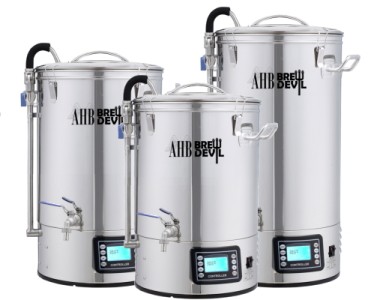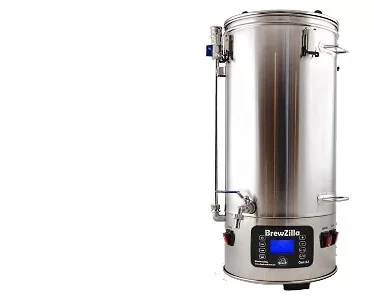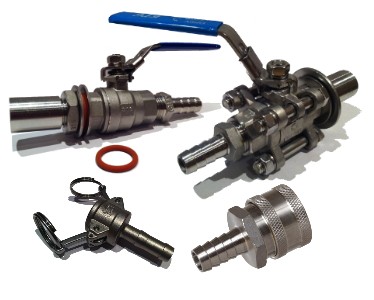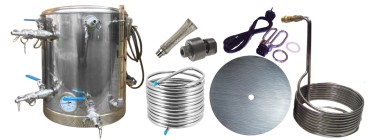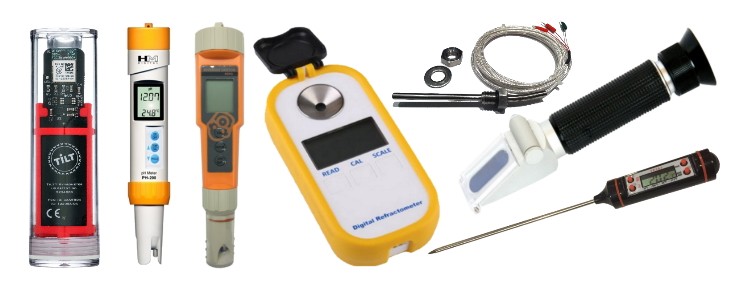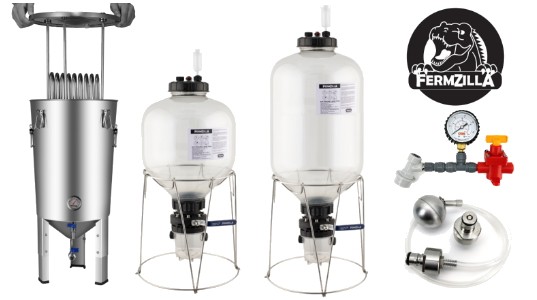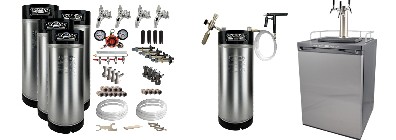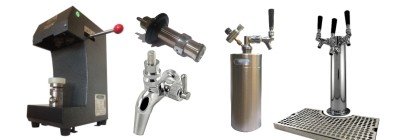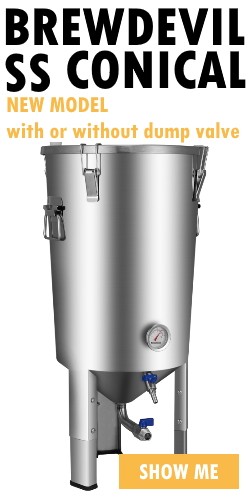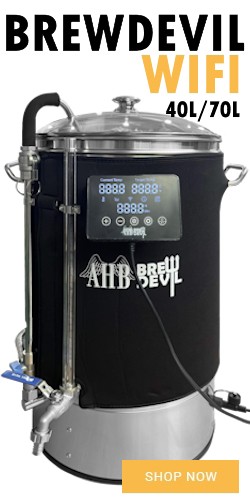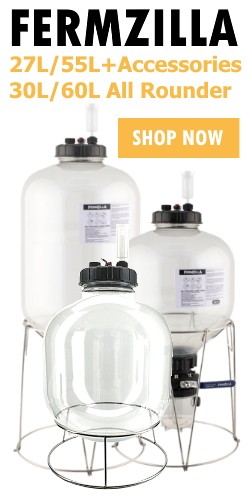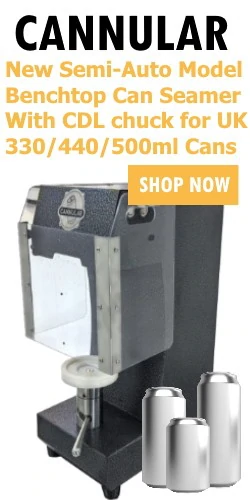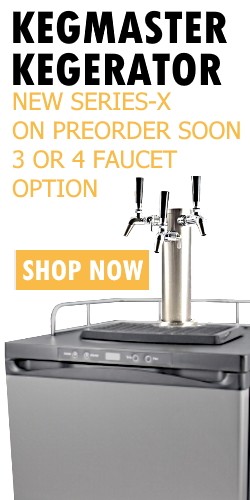The Q-Max metal punch is very effective for making clean holes in stainless steel pots.
First step is to make a hole in the pot large enough to pass the Q-Max punch's bolt through.
This is best done by first drilling a pilot hole in the pot (recommend a 4mm Premium Grade HSS Cobalt Drill Bit for this), then opening up the hole with a larger appropriate sized drill for the Q-Max bolt (see table below for bolt sizes).
The Q-Max cutter is then unscrewed into its two pieces as shown below.

The left hand side with the bolt is passed from the outside of the pot through the hole. The right hand side of the cutter is then screwed onto the bolt inside the pot with the cutting prongs against the metal.
First tighten by hand, then using the appropriate size hex key for the cutter (see table below) wind the cutter through the pot to make the hole.
Note the 14mm Q-Max cutter is slightly different mostly in that the cup side of the cutter is made up of a nut and a collar as shown below.

Below shows how the 14mm Q-Max punch cutter parts are put together on each side of a sheet of metal ready to punch. First tighten by hand and make sure the collar is correctly seated onto the nut before winding the cutter through the metal with the hex key

| Q-Max | Hex Key | Bolt Hole | Use |
| 14 mm | 6 mm | 8 mm | 1/4" BSP fittings (Thermometers) |
| 16mm | 6 mm | 8 mm | Used on some temperature probes |
| 21mm | 8 mm | 10 mm | 1/2" BSP fittings (Taps and Fttings) |
| 34 mm | 10 mm | 12 mm (Use 10 mm and open up hole) | 1" BSP fittings (2.4KW SS Element Kit) |
| 40 mm | 10 mm | 12 mm (Use 10 mm and open up hole) | 2.4KW and 2.75KW Element Kits |
